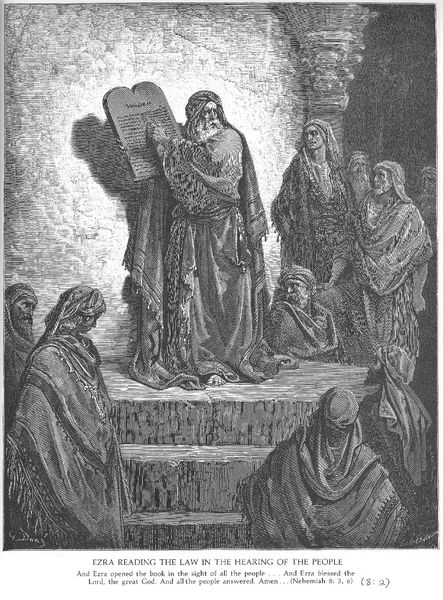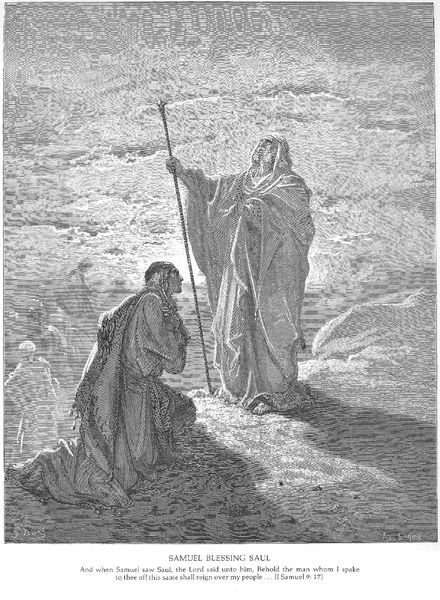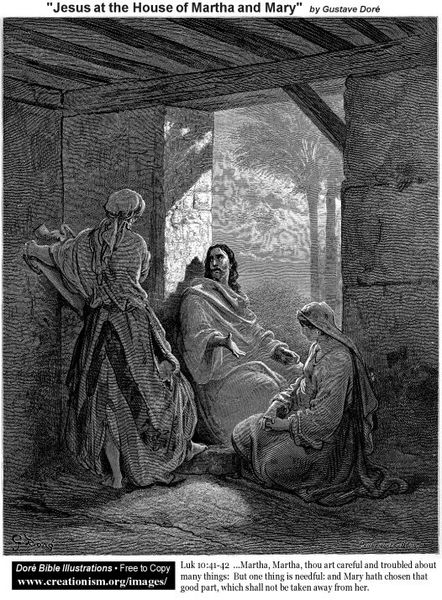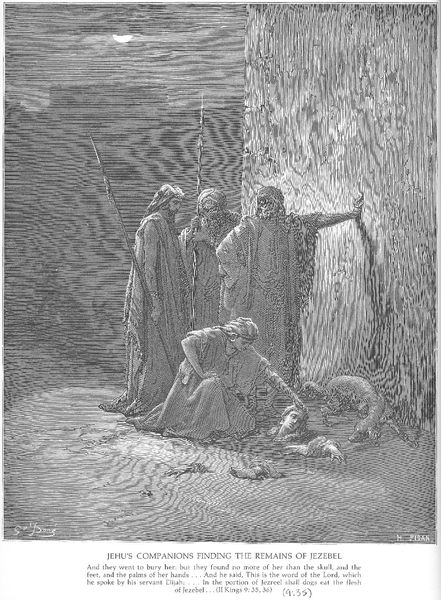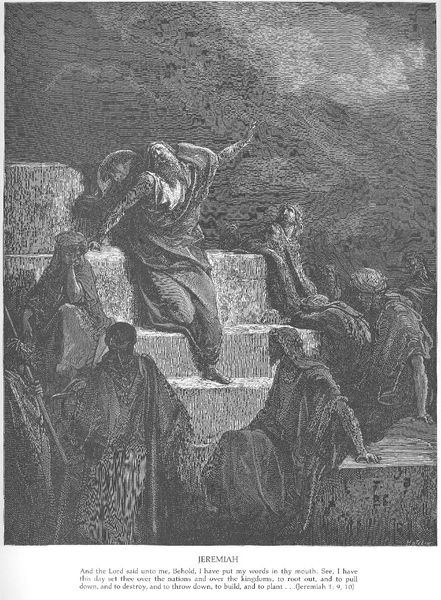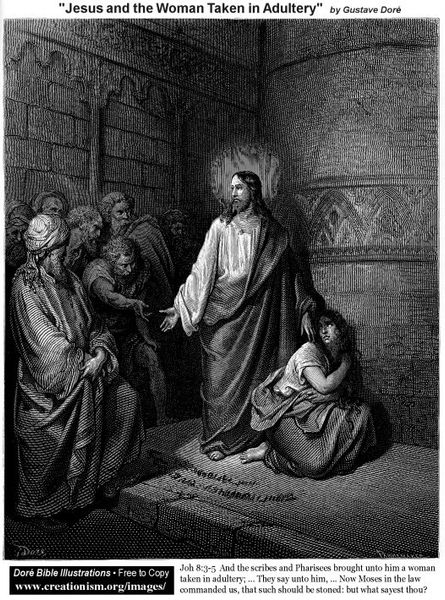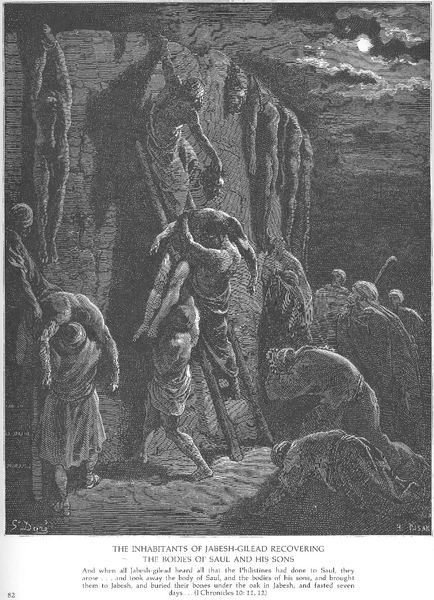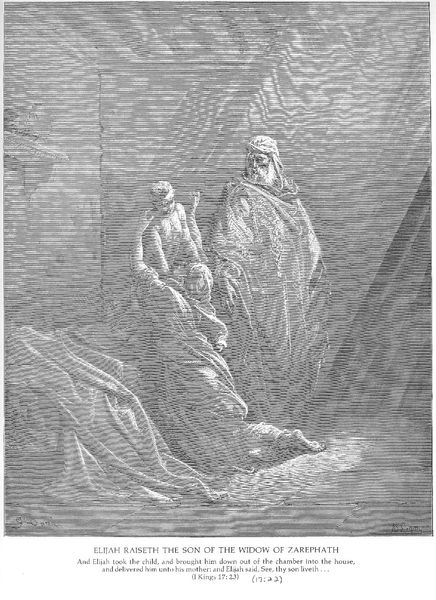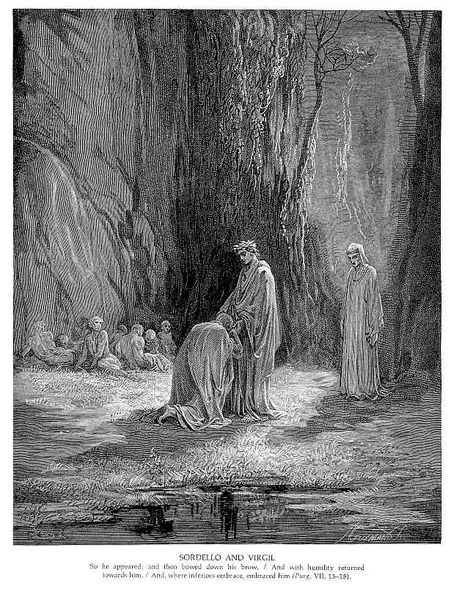
print, engraving
#
portrait
#
narrative-art
#
baroque
# print
#
old engraving style
#
figuration
#
christianity
#
line
#
history-painting
#
engraving
#
christ
Copyright: Public domain
Curator: I’m struck by the starkness of this engraving. The figures almost seem to emerge from the darkness. What do you make of it? Editor: Well, here we have "Baruch Writes Jeremiah's Prophecies." This is likely an engraving by Gustave Doré. We're looking at a scene dominated by light and shadow, a dramatic visual storytelling technique for which Doré became known. Curator: Absolutely, that chiaroscuro creates an almost tangible sense of drama, doesn’t it? The prophet Jeremiah is bathed in divine light, while Baruch, his scribe, is grounded in the earthly task of recording his words. Editor: I think it is quite deliberate how the composition directs the viewer's eye. The light seems to flow from Jeremiah's head down towards Baruch’s writing hand, visualizing the transmission of sacred text. Curator: Yes, notice too the almost palpable sense of urgency in Baruch’s posture. He’s hunched over the scroll, as if racing against time itself to capture the prophecies. His act is one of interpretation and transmission of what are supposed to be holy symbols, carrying immense meaning and power. Editor: Exactly. In a social context, disseminating these prophesies—warnings and judgements—could have enormous political repercussions. How these prophecies are recorded, how they are later interpreted by others and used or manipulated in social discourses becomes so important. Who has the power to record the history? And whose version of events prevails? Curator: It prompts consideration of cultural memory—and how it is created. Light itself could represent revelation and the holy spirit speaking through Jeremiah, an external validation from God or some powerful being. Editor: But notice, the artist doesn't idealize them. Doré portrays them as human, burdened by the weight of their task, imperfect. These engravings circulated widely, becoming a touchstone in shaping public perception. The work presents powerful religious figures into individuals situated within a wider framework of societal struggles for the population during that era. Curator: That tension, between the divine and the human, is where the emotional resonance of the piece truly lies, I think. Doré forces us to ponder the meaning behind these figures. Editor: Doré makes us examine who are the decision makers? In reality it might be both Jeremiah and Baruch whose own interpretations might color this piece of "truth," whose writing then impacts politics in unknown ways. It’s so relevant, even today.
Comments
No comments
Be the first to comment and join the conversation on the ultimate creative platform.
